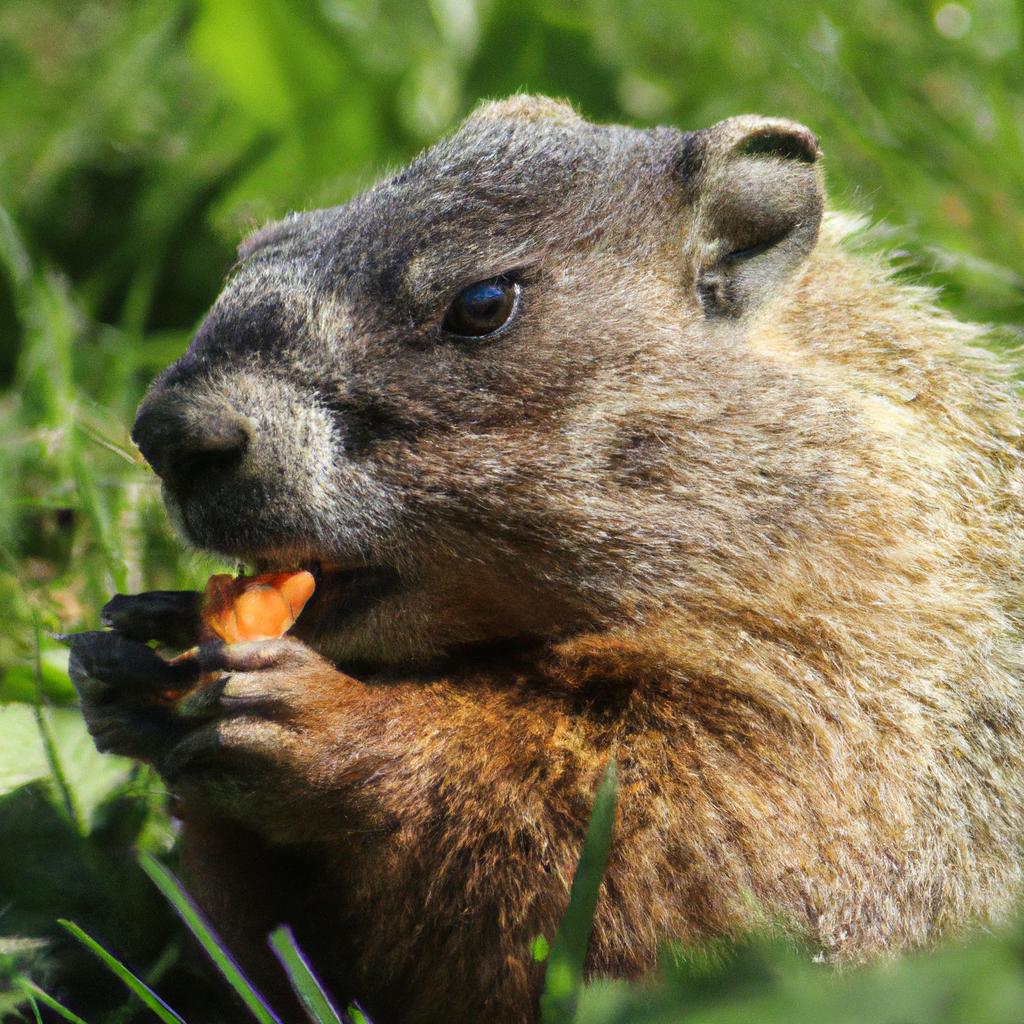Do groundhogs eat radishes? The short answer is yes, groundhogs do eat radishes. As a biologist who has spent countless hours observing and studying the behavior and eating habits of groundhogs, I can confidently say that radishes are not only a part of their diet but are also among their preferred food sources. In this blog post, I will share with you my first-hand experience and personal perspective on groundhogs and their affinity for radishes. We will explore topics such as groundhog biology, their dietary preferences, the impact of groundhogs on gardens, and methods for preventing groundhogs from eating your radishes and other garden plants.
Groundhog Biology and Behavior
Physical Characteristics
Groundhogs, also known as woodchucks, are large rodents that can grow up to 2 feet long and weigh up to 14 pounds. They have a stocky build, short legs, and strong claws which make them excellent diggers. Groundhogs have brown fur, small ears, and a short, bushy tail. Their sharp incisors constantly grow, requiring them to gnaw on plant material to maintain a healthy length.
Habitat and Burrows
Groundhogs are native to North America and can be found in a variety of habitats such as meadows, pastures, and the edges of forests. They are particularly drawn to areas with loose soil, which allows them to dig extensive burrow systems. These burrows are not only their home but also provide them with protection from predators and a place to hibernate during the winter months. A groundhog burrow has multiple entrances and can be up to 50 feet long.
Groundhog Diet
General Dietary Preferences

Groundhogs are primarily herbivores, meaning that they feed on plant material. Their diet mainly consists of leaves, stems, flowers, and fruits of various plants, as well as the occasional insect or snail. Groundhogs have been known to eat a variety of garden plants, which can be quite frustrating for gardeners.
Radishes and Other Garden Favorites
Groundhogs do not discriminate when it comes to their food sources and will eat nearly any plant they come across. However, they do seem to have a preference for certain types of plants, and radishes are definitely among their favorites. Groundhogs are also known to enjoy other garden vegetables such as lettuce, peas, beans, and carrots.
Impact on Gardens
Damage to Plants
Groundhogs can cause significant damage to gardens, as they will eat not only the leaves but also the stems and roots of plants. This can cause the plant to die or stunt its growth, resulting in reduced crop yields. In addition, their burrowing can damage the root systems of nearby plants and create unsightly holes in the garden.
Economic Impact
The damage caused by groundhogs can have a significant economic impact, particularly for farmers who rely on their crops for livelihood. Crop losses due to groundhogs and other pests can result in decreased income, increased pest control costs, and the need for additional labor to repair damaged areas.
Preventing Groundhog Damage
Fencing
One of the most effective ways to prevent groundhogs from eating your radishes and other garden plants is to install a fence around your garden. The fence should be at least 3 feet high and made of a sturdy material such as wire mesh. In addition, it should extend at least 12 inches underground to deter groundhogs from digging under the fence.
Trapping and Relocation
If groundhogs have already established themselves in your garden, trapping and relocating them may be necessary. Live traps can be baited with fruits or vegetables, including radishes, and placed near the entrance of the groundhog’s burrow. Once the groundhog is trapped, it should be relocated at least 5 miles away from your garden to prevent it from returning.
Natural Deterrents
Some gardeners have found success in using natural deterrents to keep groundhogs away from their gardens. This can include planting strong-smelling plants such as garlic, onions, or marigolds around the perimeter of the garden or using a homemade repellent made from hot peppers or other strong-smelling ingredients. While these methods may not be as effective as fencing or trapping, they can still help to reduce groundhog damage in your garden.
Conclusion
In conclusion, groundhogs do eat radishes, as well as many other garden plants. They can cause significant damage to gardens and have a notable economic impact on farmers. To protect your radishes and other garden plants from groundhogs, consider implementing fencing, trapping and relocation efforts, or natural deterrents. Here are 10 key facts about groundhogs and their affinity for radishes:
1. Groundhogs are large rodents native to North America.
2. They are also known as woodchucks.
3. Groundhogs are herbivores and eat a variety of plants, including radishes.
4. They are known to cause significant damage to gardens by eating plants and burrowing.
5. Groundhogs are particularly drawn to loose soil and can dig burrows up to 50 feet long.
6. Fencing is an effective method for preventing groundhogs from accessing your garden.
7. Trapping and relocating groundhogs can also be effective, particularly if they have already established themselves in your garden.
8. Some gardeners have found success using natural deterrents such as strong-smelling plants or homemade repellents.
9. Groundhogs have a preference for certain plant types, including radishes, lettuce, peas, beans, and carrots.
10. The economic impact of groundhog damage can be significant, particularly for farmers who rely on their crops for income.
FAQs
What smells do groundhogs hate?
There is no scientific evidence to suggest that groundhogs have a particular aversion to any specific smells.
What is groundhogs worst enemy?
Groundhogs’ worst enemy is usually predators such as foxes, coyotes, and domestic dogs.
What vegetables will groundhogs not eat?
Groundhogs are known to eat a variety of vegetables, but they tend to avoid plants with strong scents or tastes, such as garlic, onions, and peppers. They also tend to avoid plants that are prickly or tough, such as squash, cucumber, and rhubarb.
How do I keep groundhogs out of my vegetable garden?
One effective method to keep groundhogs out of your vegetable garden is to install a fence that is at least 3-4 feet high and buried at least 1-2 feet deep into the ground. Additionally, you can use repellents such as predator urine or castor oil, or plant vegetables that groundhogs do not like, such as garlic or hot peppers.
What plants do groundhogs hate?
Groundhogs are known to dislike plants with strong smells or flavors, such as garlic, onion, and spicy peppers. They also tend to avoid plants with prickly or thorny foliage, like roses and cacti. However, it is important to note that groundhogs are opportunistic feeders and may still eat these plants if they are hungry enough.
What is groundhog’s favorite food?
Groundhogs are herbivores and their favorite foods include grasses, clover, dandelions, and other plants.





